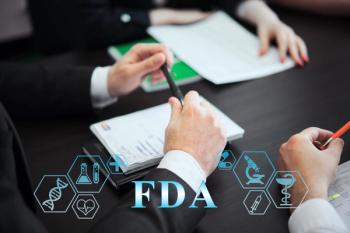
Response to the Fiscal Crisis: The Valuing Conversation
As Europe sets the pace in slashing drug prices to meet austerity goals industry is seeking fresh ways to control the fallout. Will more dialogue be enough?
With Europe-and many other industrialized country markets-now on the fiscal equivalent of life support, biopharma is in dire need of a survival strategy. Margins for medicines are confronting steep cuts as governments press the drugs sector as its “lender of first resort.” The rationale is its better to start by slashing spending on medicines than tackle the labor unions, hospitals and professional associations whose political clout has created financing obligations that can stretch on for decades. The big question at industry gatherings is what offerings it can make to respond to the need for budgetary discipline and preserve support for innovation, particularly in competition with these other equally pressed stakeholders for shares of a shrinking resource pie.
In Europe, the front line for this issue, industry is framing its response around the broader concept of “value.” The message is that for the average 10 to 15 per cent of health system expenditures allocated to medicines, governments will obtain savings attributable to the avoidance of costly acute care interventions as well as from better patient outcomes.
All this sounds good but the reality is there is still no working definition of what “value” is as applied to medicines, nor has much progress been made on cross-constituency standards or metrics that could provide evidence to bolster these claims and actually force payers to be accountable to the data. Is it really in the interest of the payer to create more specificity around the idea of “value” and, if so, is it appropriate for industry to pursue a strategy centered on something so vague and open to self-interpretation?
The uncertainty is compounded by a dawning perception among European governments that health technology assessment [HTA]-a tool that does assert “value” can be quantified-may no longer be the ideal means for rationalizing the distribution of scarce health resources. Especially at short notice and under crisis conditions.
Part of this is due to a familiarity that can breed contempt. Europe now has more than a decade of experience with HTA institutions and their record in managing medicines costs is mixed. In their response to the fiscal collapse, only Germany among the EU countries has opted to enhance the role of cost effectiveness evaluations; most other governments chose a faster route to achieve savings, through price reductions, demand/volume controls like tendering, and international price referencing. Even in Germany’s case the position accorded to HTA is supplementary, overshadowed by the decision to end the charade of officially free pricing with a formal requirement for negotiated prices beginning at the latest 12 months after launch.
So it is interesting that GSK CEO Andrew Witty, in his inaugural address last month as chair of EFPIA, called for a “new dialogue” with governments linked to a common understanding of value. What Witty seems to be calling for is a reinvigoration of the HTA tool kit, by aligning what national HTA authorities do in assessing value to the work of the European Medicines Agency [EMA] in granting a market authorization to sell a new medicine. “There is a certain appeal to having a relative effectiveness discussion once in Europe, rather than having it 27 times and potentially answered in 27 different ways,” he said.
Again, there is a richly opaque history in attempting to define what is a “relative effectiveness discussion,” but the thrust is clear. It requires putting more faith in European institutions to overcome the duplication and delay of a decentralized, devolved decision-making process in determining what really drives access to a new medicine: why and for whom it is reimbursed and at what price. The challenge is that the approach obscures an early and firmly held industry position, which is that such decisions be conducted as close to the patient as possible rather than by a distant bureaucracy following its own signals and incentives.
It also begs another question: could it be that Witty has decided to join the party precisely when his partners are opting for a new dance card? Because actually the fastest and most direct way to score the drugs bill is through international price referencing. Here, any country can take immediate advantage of the austerity pills introduced in Greece or Spain-or an emerging market like Turkey, for that matter-by simply adding that country to its basket of reference countries. The recourse is tempting now that the EU has a majority of low price countries and is poised to admit two more with rock bottom drug costs.
The desire of all countries to be “just average” means that the benchmark can only trend lower. Savings here are immediate if arbitrary, while the onus is not on the patient but on the producer to comply-and face the wrath of the EMA, the EU Commission and local governments if he doesn’t. More important, there are no howling patient groups aggrieved about “death panels” and other access barriers that occur when HTA authorities assert the absence of value based on criteria no layman politician can understand.
Next Up: Watch the UK…and Brussels
It will be interesting to examine how this issue evolves over the next year, as the fiscal watering hole for industry in Europe continues to shrink. A key bellwether is the UK, where the new government wants to backstop the National Institute for Health and Clinical Excellence [NICE] as referee of access to the NHS through a new plan for “value-based pricing.” No one is sure if this means abandonment or renegotiation of the Pharmaceutical Price Regulation Scheme [PPRS], but the overall direction is evident. The government wants to get more involved in pricing, perhaps joining Germany in ending the commitment to price freedom, the impact of which would be even more devastating globally due to the many countries outside Europe that reference UK prices.
Another factor that bears close watching is the extent of industry engagement on an EU Commission pilot to test the waters for an EU-wide structure to evaluate relative effectiveness of new medicines. To drive the pilot, it wants companies to furnish data on individual products, focusing on orphan specialty medicines, a request that has sparked varying reactions from individual firms. In a larger sense, is any industry-wide consensus around cooperation possible, particularly when much action on HTA now seems driven by groups that operate outside the boundaries of the major trade associations, a trend accentuated by the fact that US PhRMA no longer has any real institutional presence in Europe?
What is known is that EFPIA has put out another tender to consultants for a study on “what to do.” In that sense, little has changed. Stay tuned.
Newsletter
Lead with insight with the Pharmaceutical Executive newsletter, featuring strategic analysis, leadership trends, and market intelligence for biopharma decision-makers.





